Ludwigia inclinata
Scientific name: Ludwigia inclinata
Family: Onagraceae
Maximum size reached under cultivation: 20 - 40 cm (7.87 - 15.75 inch)
014
Recommended pH range: 6.5 - 7.4
Recommended water hardness: 4 - 18°dGH (71.43 - 321.43ppm)
0°C 32°F30°C 86°F
Recommended temperature range: 18 - 26 °C (64.4 - 78.8°F)
Preferred propagation method: Cuttings
Native to: South America
Growth rate: Fast
Recommended substrate: Fine gravel
Lighting requirements: Bright
Ideal placement in tank: Background
Common Name
Ludwigia inclinata (no widely used common name; sometimes referred to by cultivar, e.g., 'Cuba')
Origin
Central and South America – especially found in areas like Brazil and Venezuela, often growing in shallow wetlands and slow-moving waters.
Propagation
This species is easily propagated through stem cuttings. Simply snip a healthy lateral shoot using sharp scissors, remove the bottom two pairs of leaves, and gently insert the bare stem into fine gravel. Avoid crushing the stem when planting. With stable water conditions and bright lighting, roots will form quickly at the nodes.
Difficulty
Medium – suitable for aquarists with some experience, mainly due to its specific lighting and nutrient demands.
Short Description
Ludwigia inclinata is a fast-growing, colorful stem plant ideal for background placement in aquascaped tanks. It produces beautiful reddish to orange leaves when grown under intense lighting, forming a striking contrast with green plants. In lower light, the colors fade to green and lower leaves may drop, affecting the plant's appearance. This species benefits from CO2 injection and a nutrient-rich water column. Regular trimming encourages bushier growth and prevents it from overshadowing nearby plants.
FAQs
-
How do I maintain the red coloration of Ludwigia inclinata?
To achieve and maintain the vibrant red or orange hues, ensure the plant receives strong, direct lighting (at least 0.5 watts per liter or more). Supplementing with iron and micronutrients, along with CO2 injection, greatly enhances coloration and overall health.
-
Why are the lower leaves falling off?
This usually happens when the plant doesn’t receive enough light, or when it's shaded by taller species. Trim surrounding plants and ensure the lighting reaches the lower stem. CO2 and good water circulation also help prevent leaf drop.
-
Can Ludwigia inclinata be trimmed and replanted?
Yes, it's one of the best stem plants for propagation. Trim the top portions and replant them to form dense bushes. This not only helps with aquascaping but also encourages the mother plant to branch out and grow fuller.
-
Is this plant suitable for low-tech aquariums?
It can survive in low-tech setups, but it will lose its vibrant coloration and grow leggy. For best results, a high-tech setup with strong light, fertilization, and CO2 is recommended.
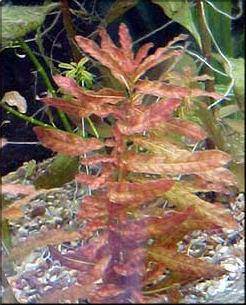
 Ludwigia brevipes
Ludwigia brevipes Ludwigia glandulosa
Ludwigia glandulosa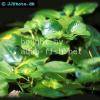 Ludwigia helminthorrhiza
Ludwigia helminthorrhiza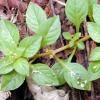 Ludwigia palustris
Ludwigia palustris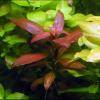 Ludwigia peruensis
Ludwigia peruensis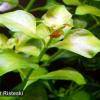 Ludwigia repens
Ludwigia repens